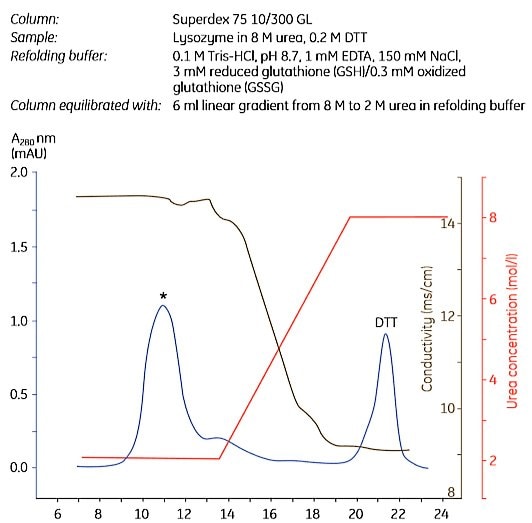Refolding of proteins using gel filtration
Conceptually, refolding with gel filtration takes advantage of the fact that the gel matrix restricts aggregation through a “cage-like” effect. In addition, the constant removal by the gel filtration mechanism of aggregates that may form continuously during the process may be crucial for a high refolding yield. The reason is that the presence of aggregates, even small amounts, is believed to induce an accelerated aggregation. Theoretically then, gel filtration could provide far more efficient refolding (% yields) than simple dilution or dialysis.
Two different experimental strategies are used. One involves equilibrating the column with the refolding buffer. The sample containing the solubilized inclusion bodies in solubilization buffer is then applied. During the passage through the column, solubilization buffer components are retarded and the protein will therefore be transferred to a denaturant-free environment.
The second strategy involves equilibrating the column with solubilization buffer or introducing into the column a decreasing gradient from solubilization buffer to the refolding buffer before sample application. The refolding buffer is then used to elute the protein. The latter approach involves a more gradual transfer of the protein to a denaturant-free environment, which has proven beneficial in many cases. An example of this latter approach is shown in Figure. 3.3.

Figure 3.3.Refolding of lysozyme by gel filtration in a urea gradient. The asterisk indicates the elution position for refolded lysozyme. Blue line = absorbance at 280 nm; brown line = conductivity; red line = theoretical urea concentration. Used with permission. Copyright 2001. Elsevier Science BV.
Suitable prepacked gel filtration columns for refolding are listed in Table 3.5.
Materials
To continue reading please sign in or create an account.
Don't Have An Account?